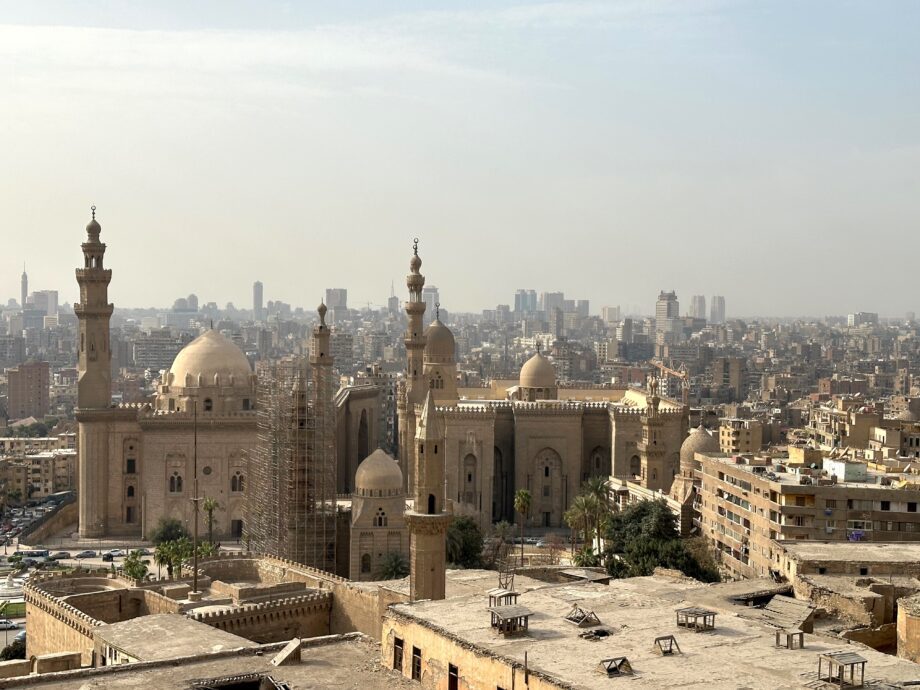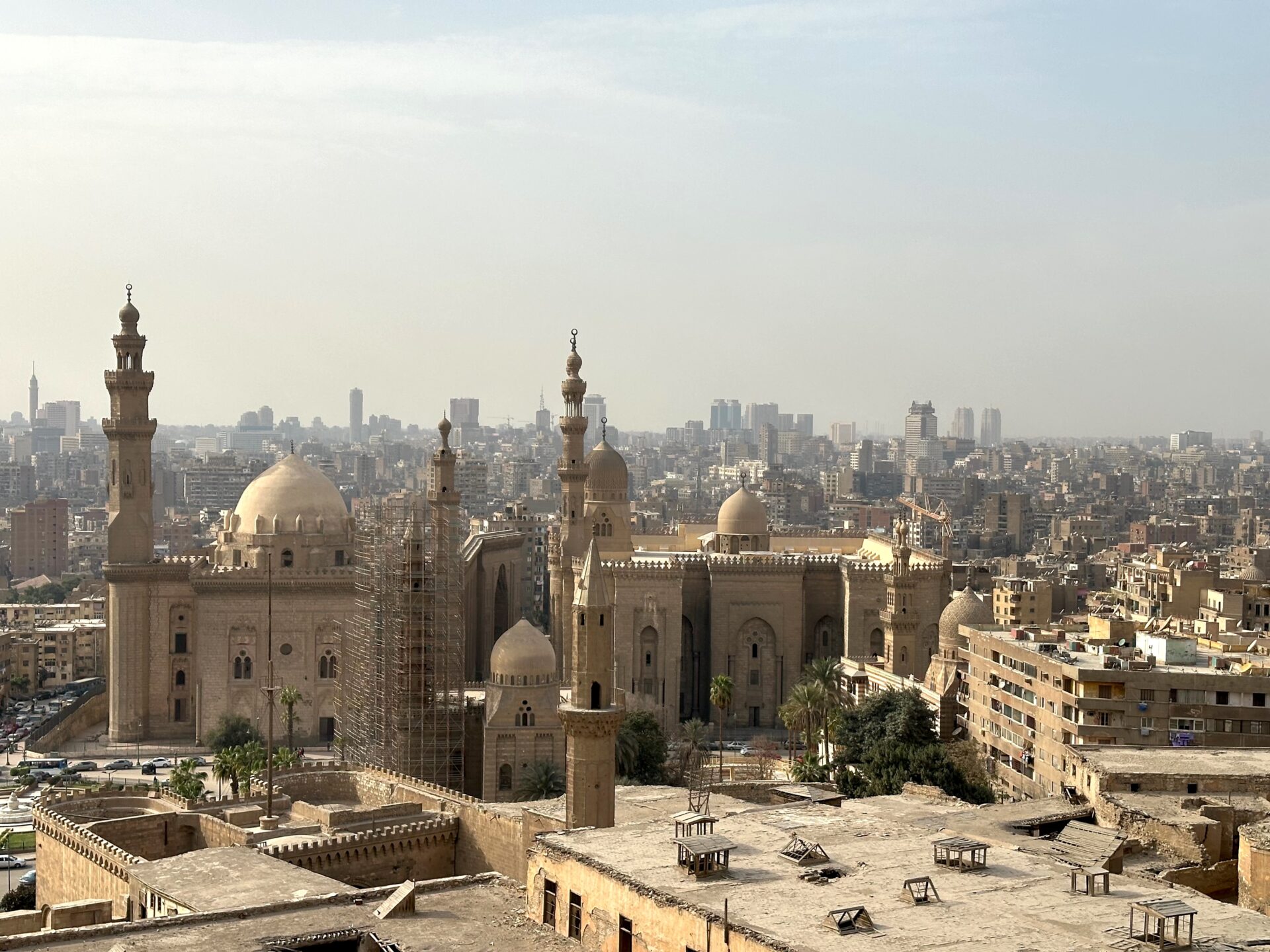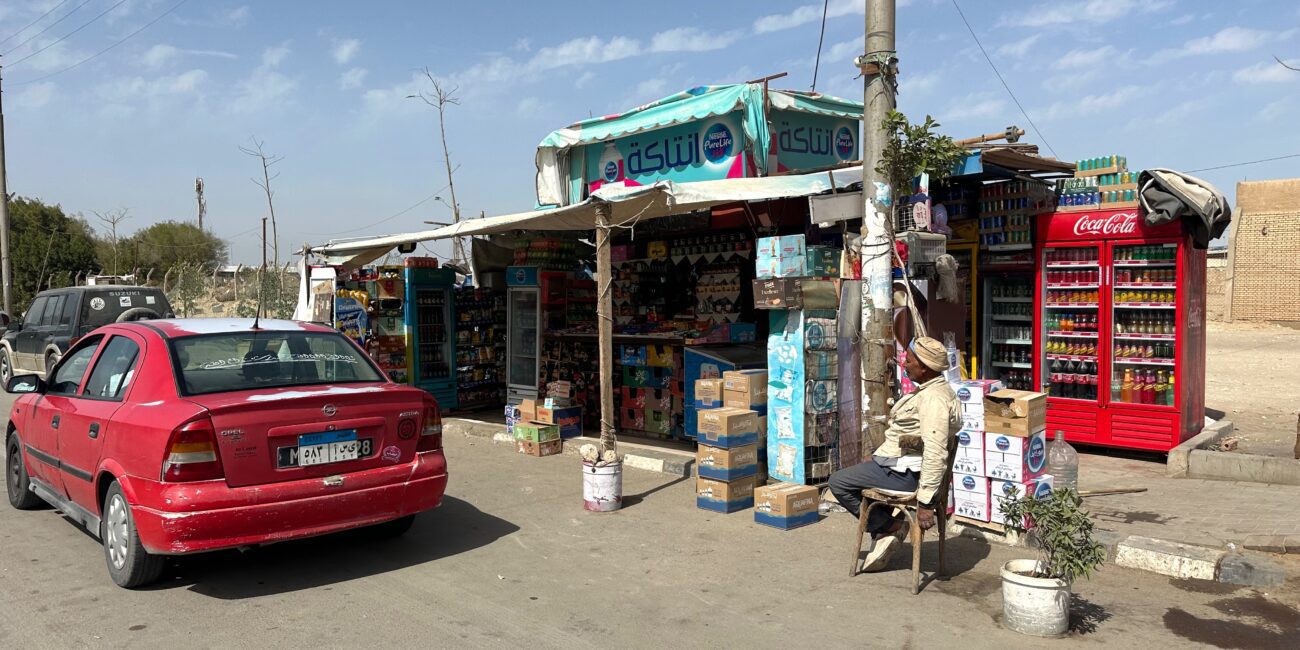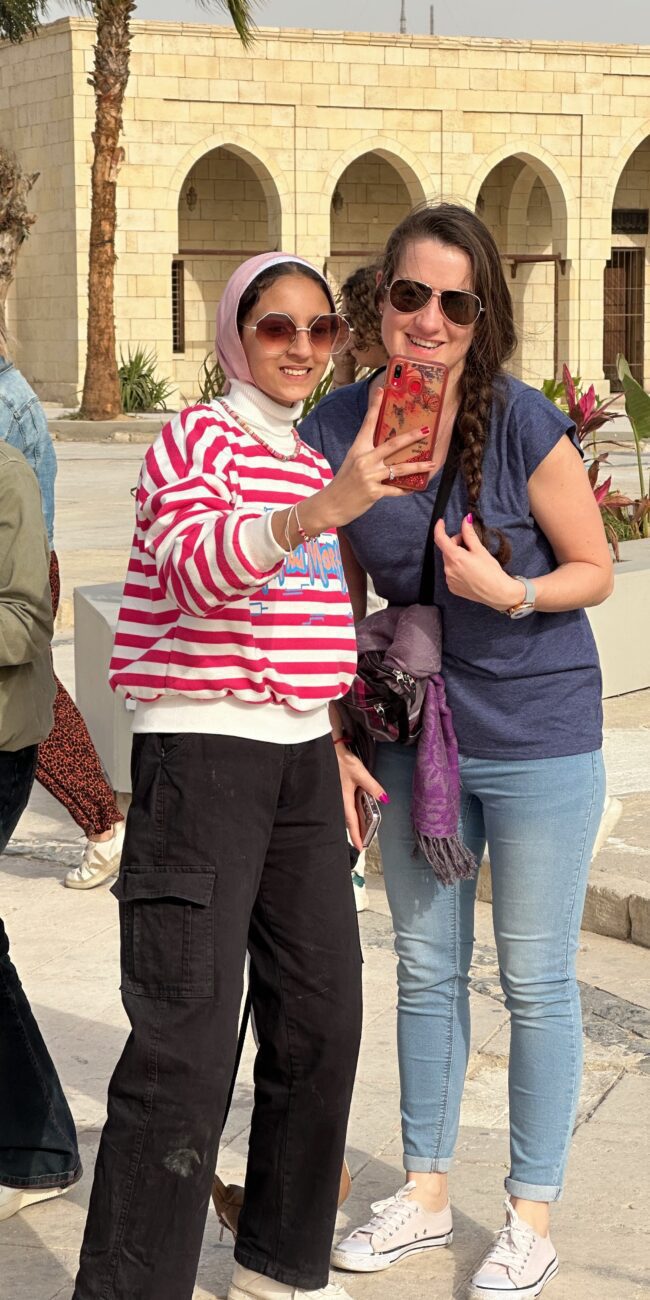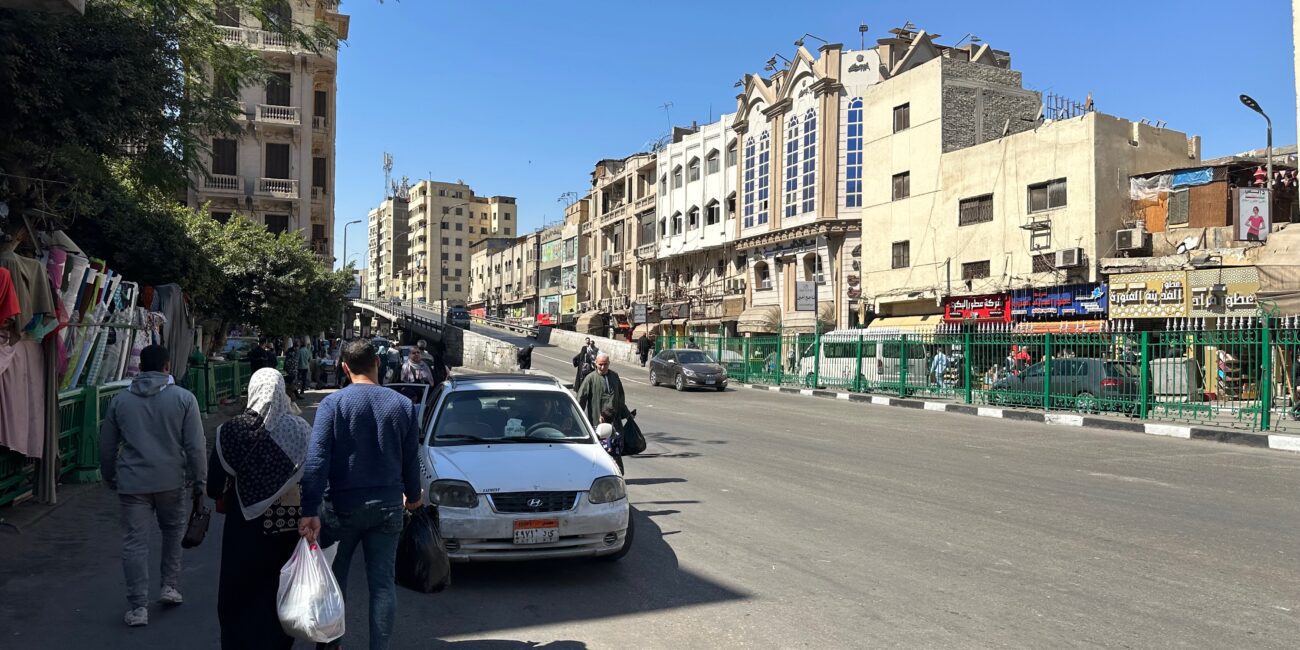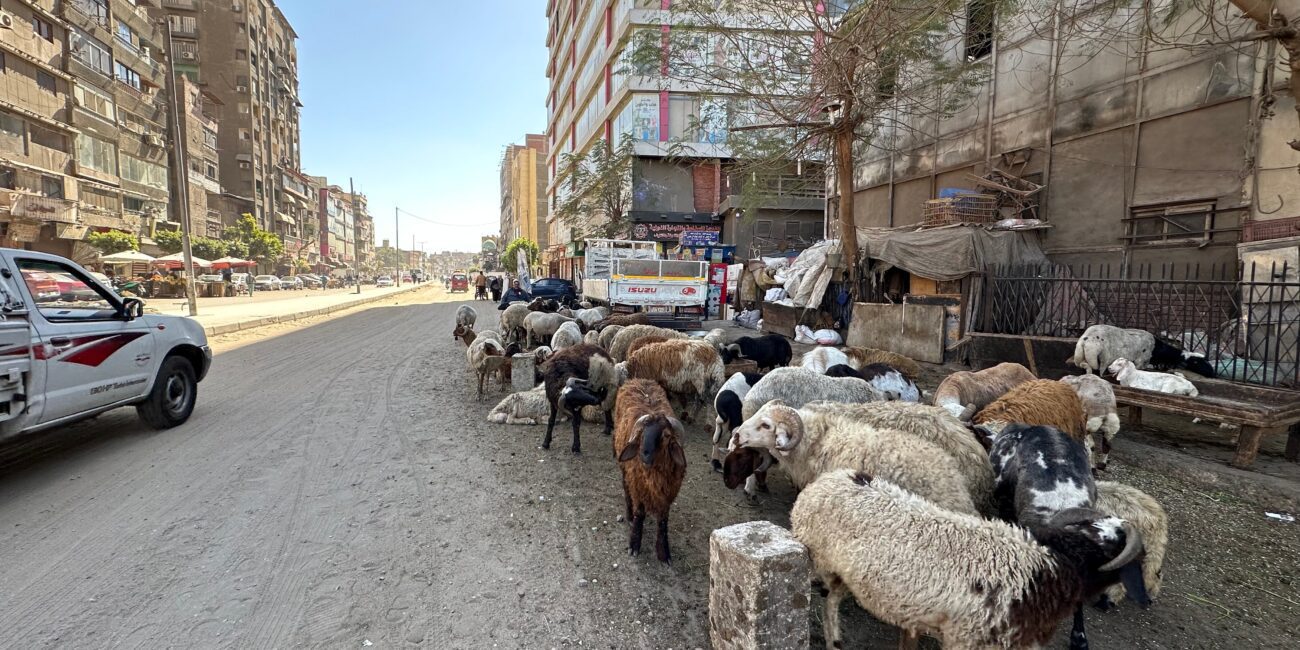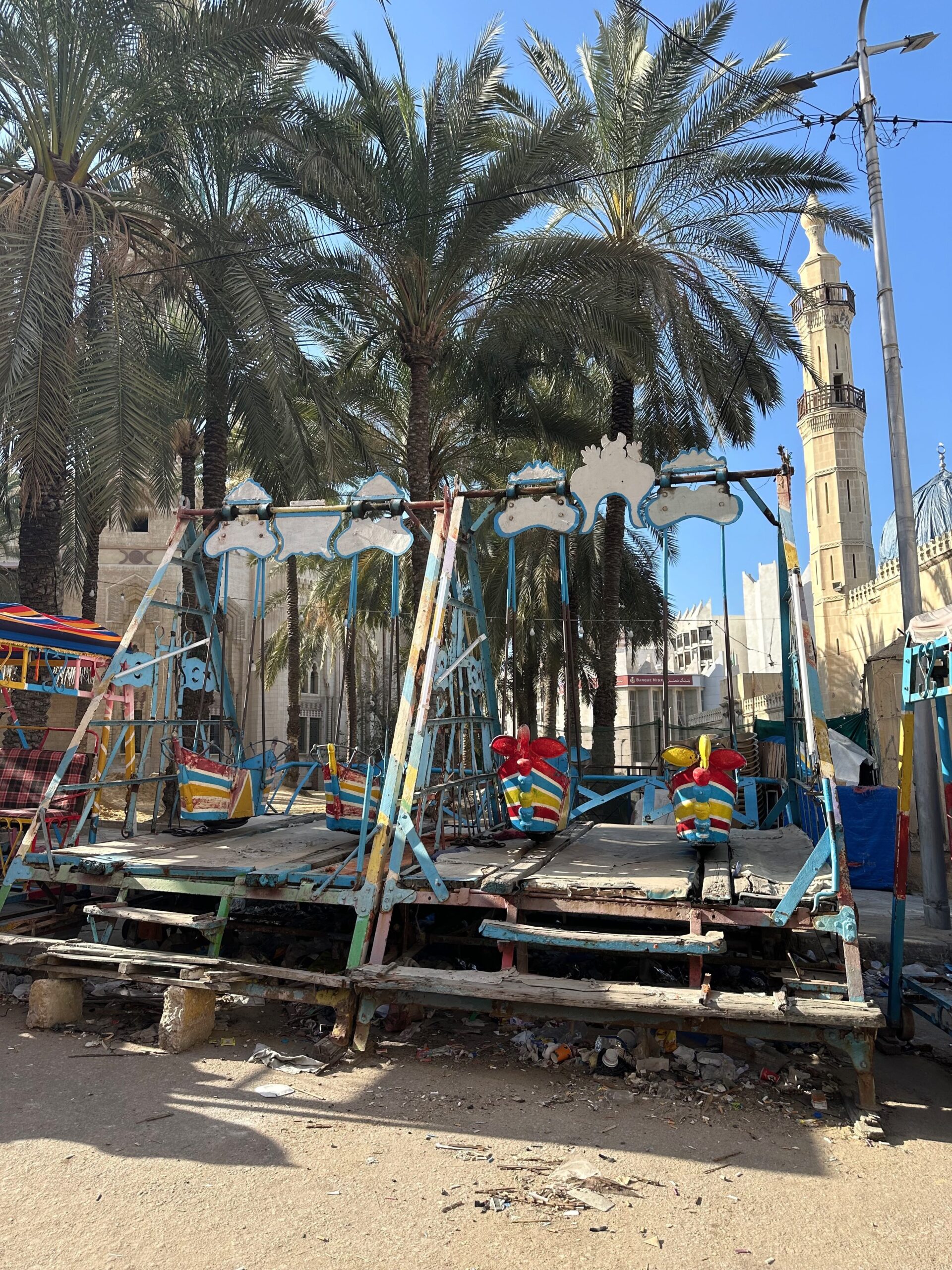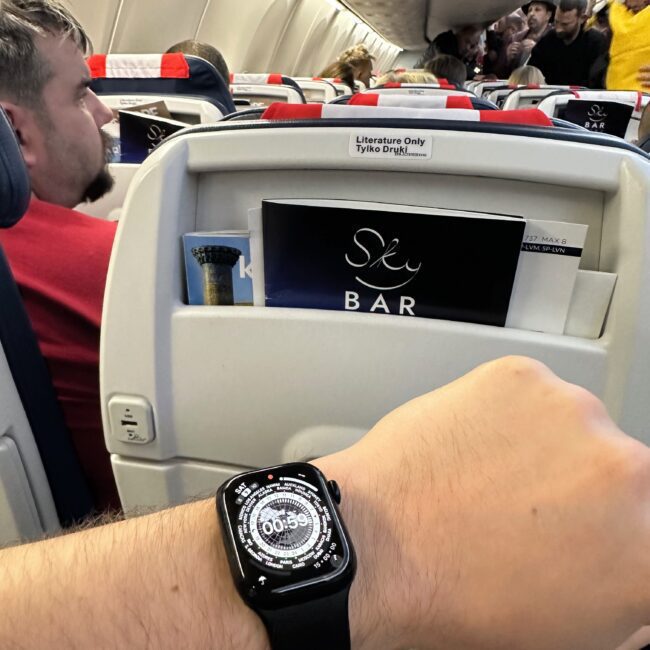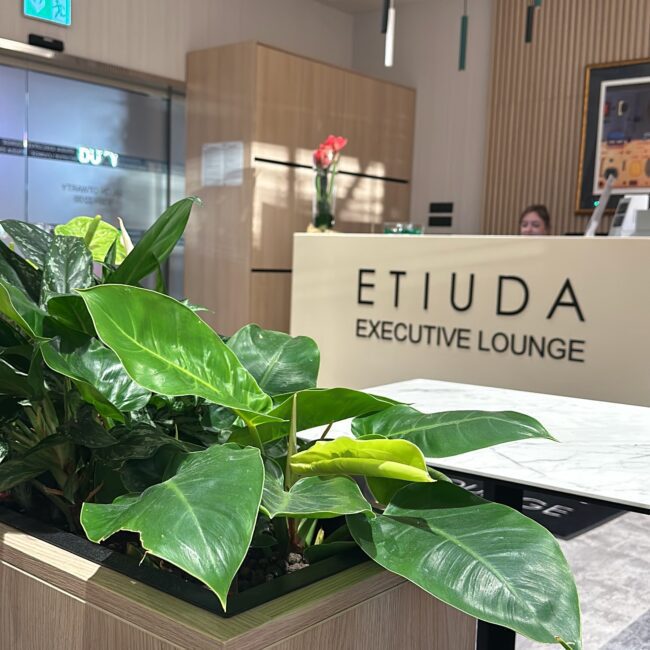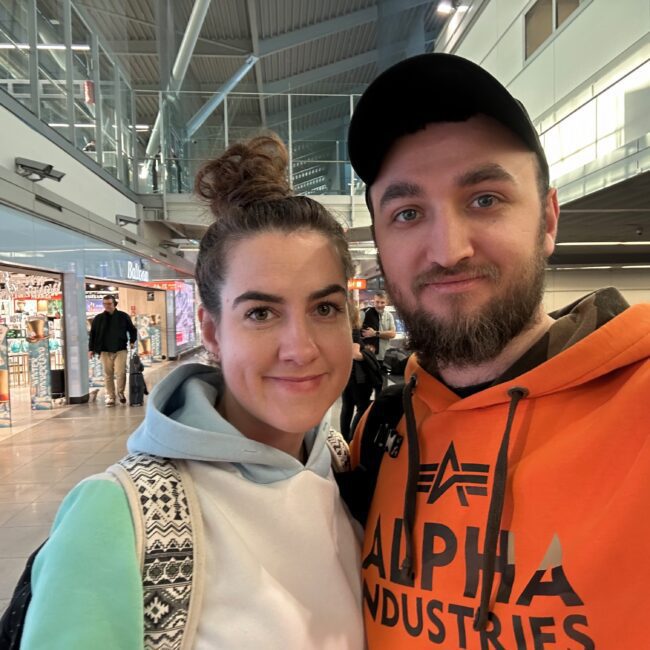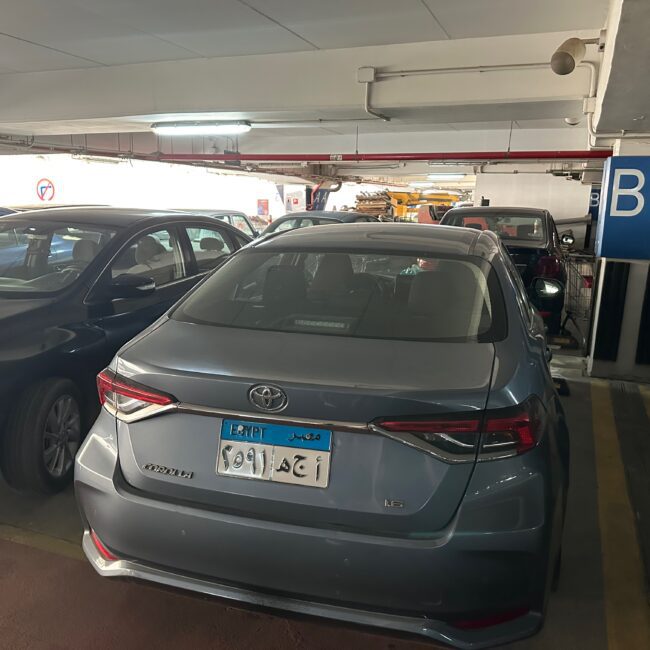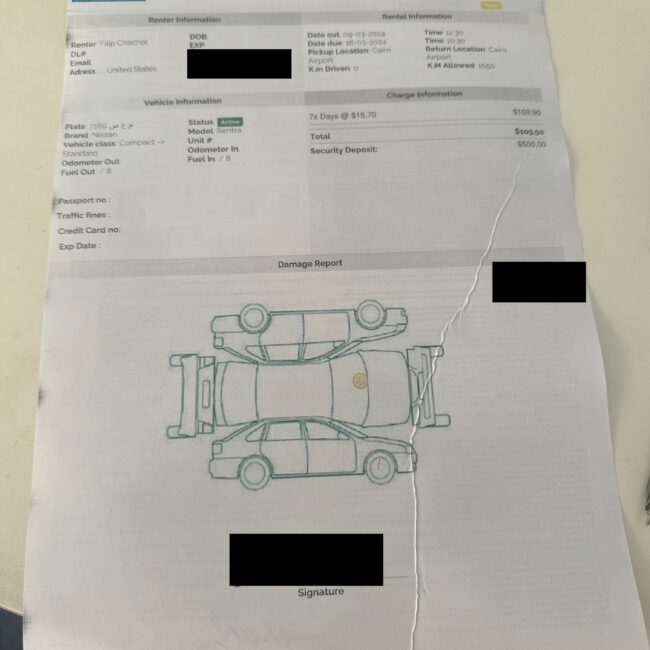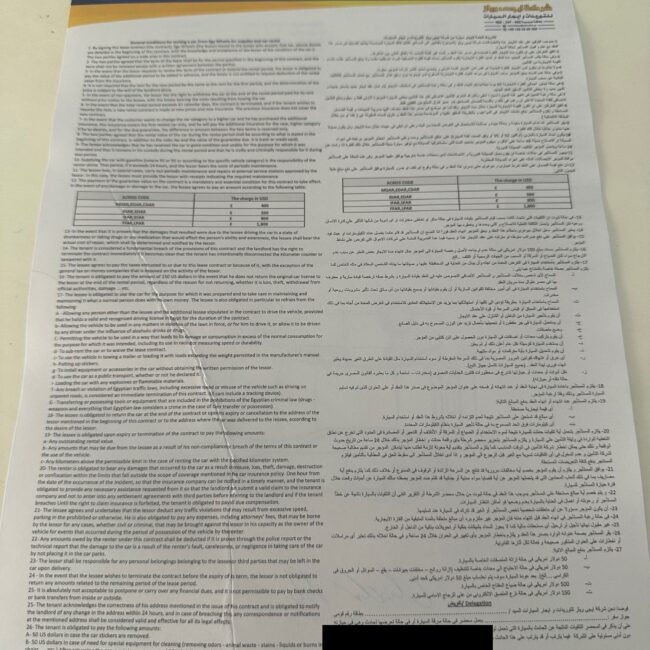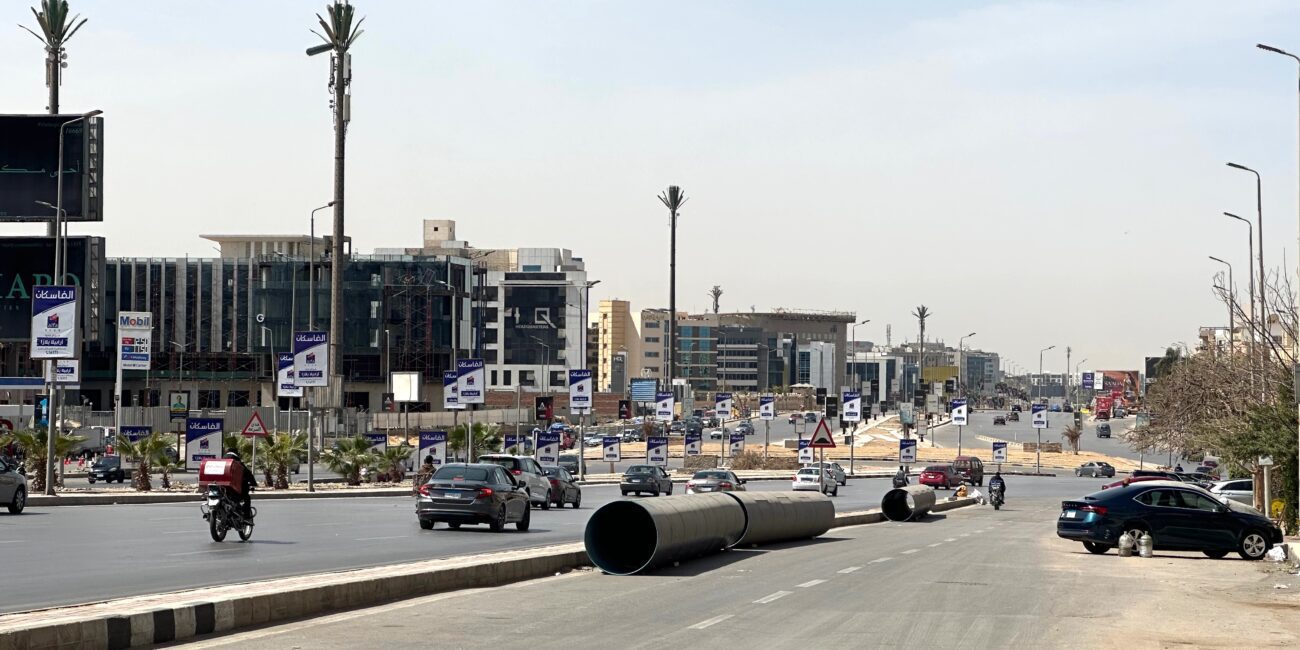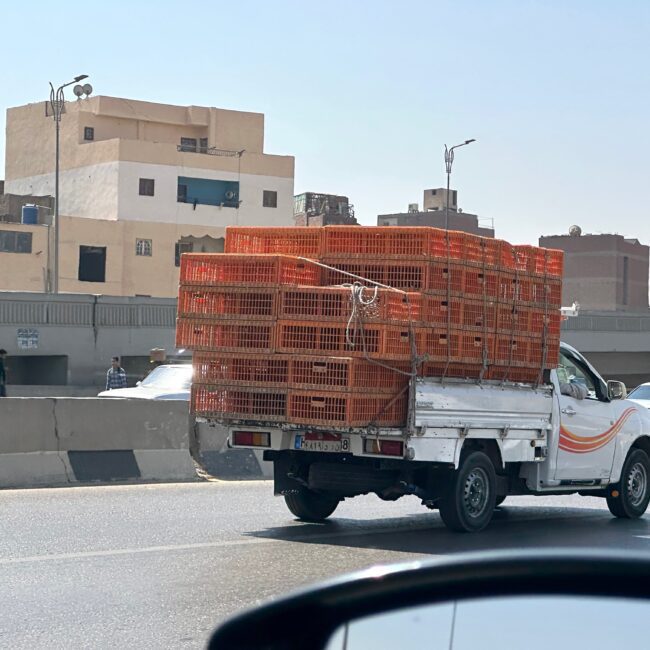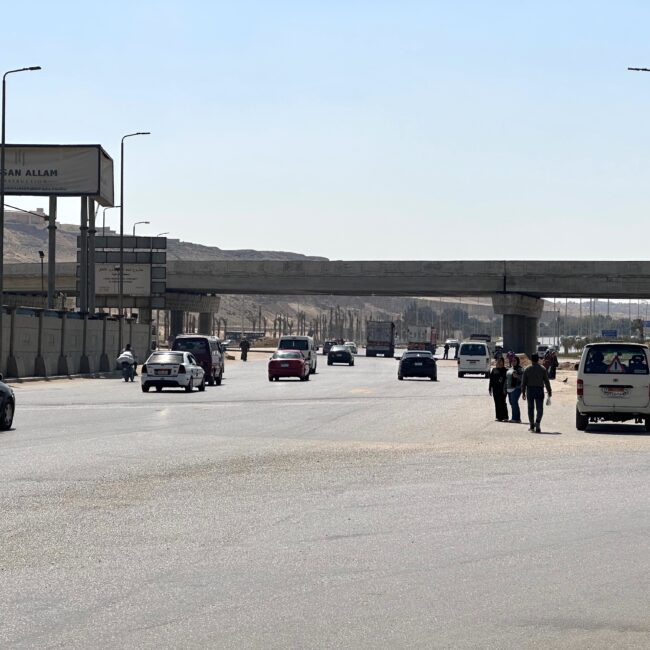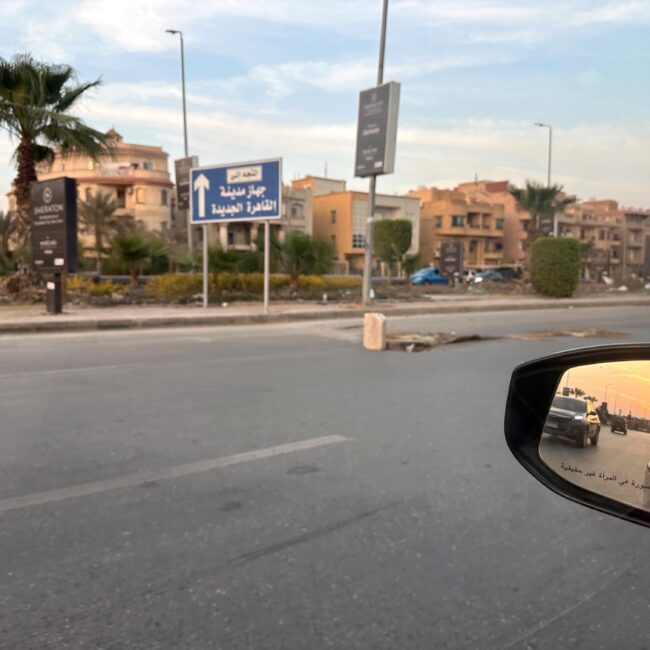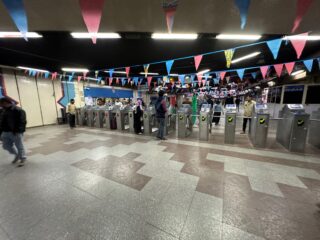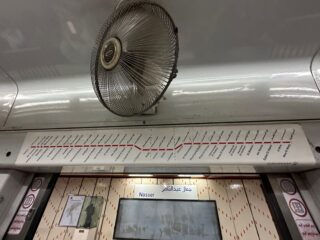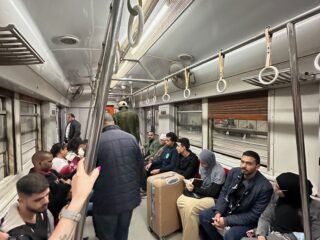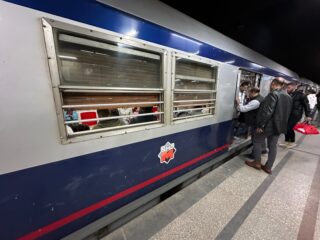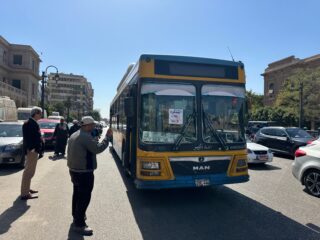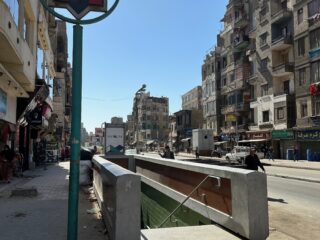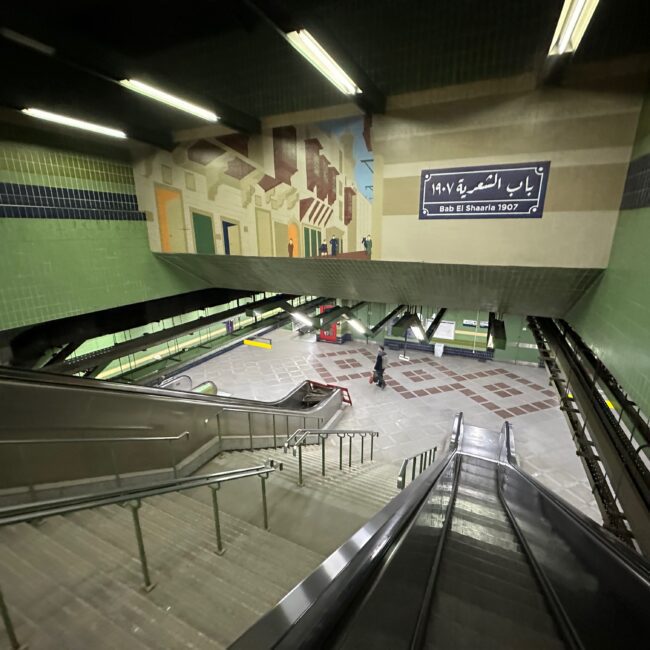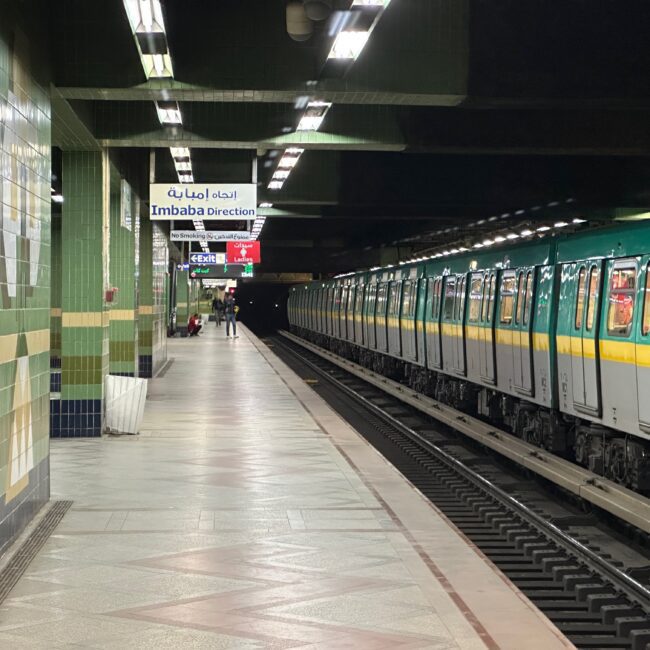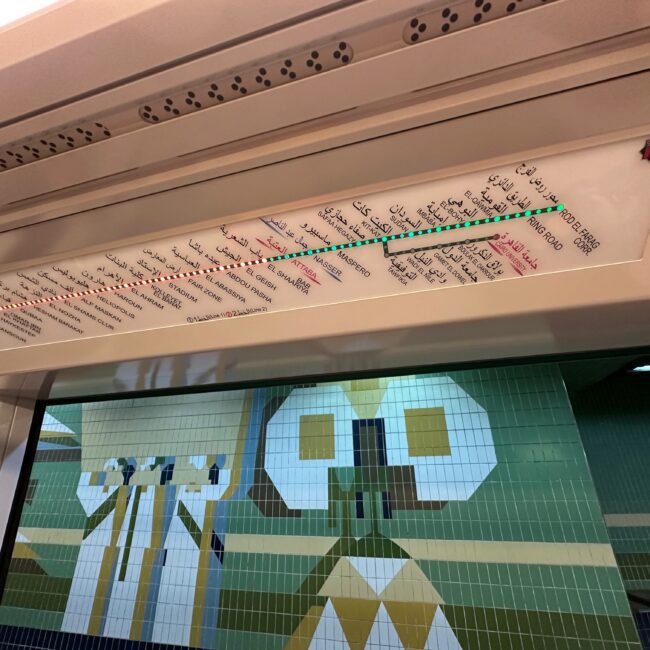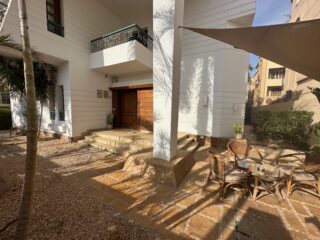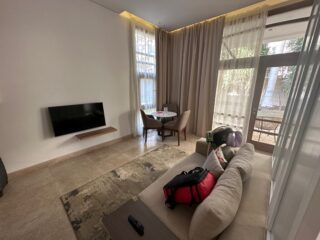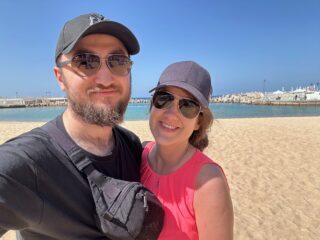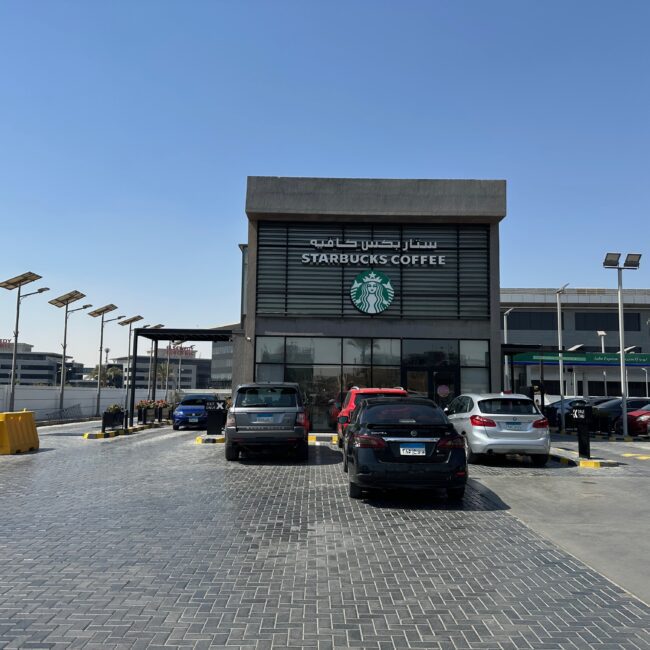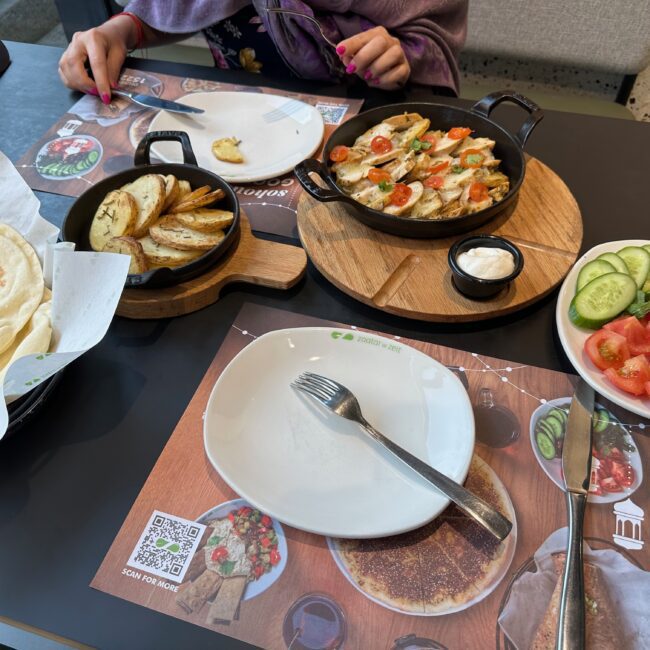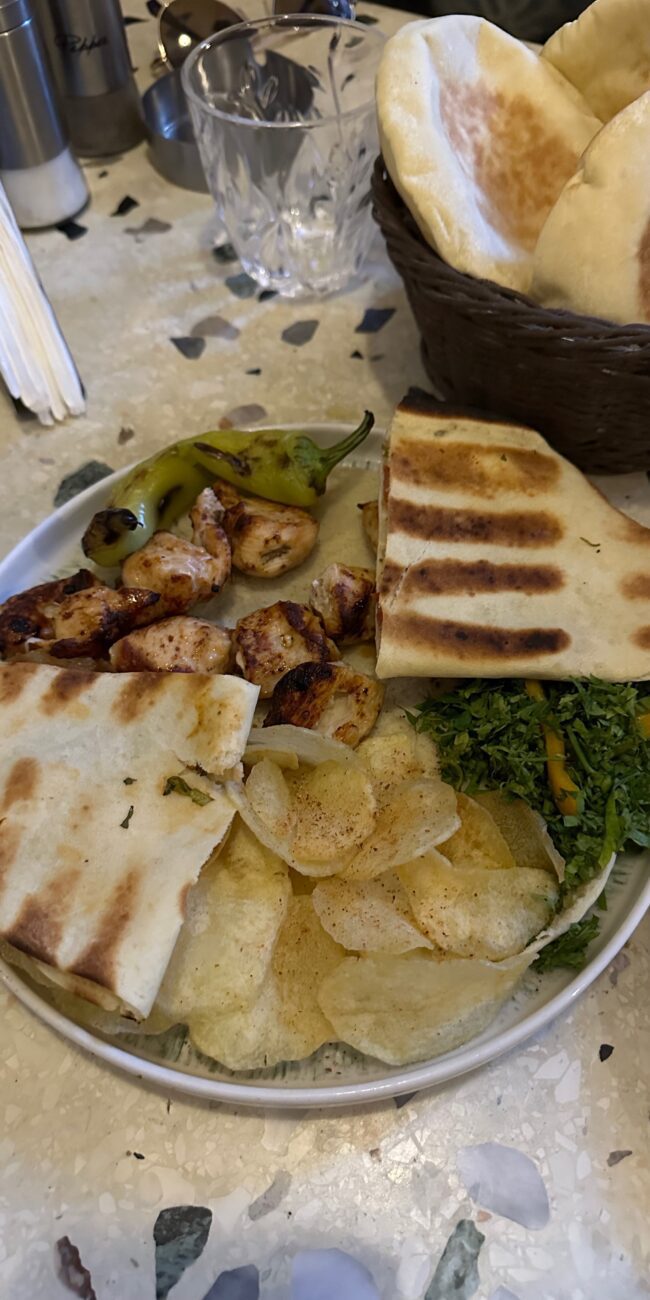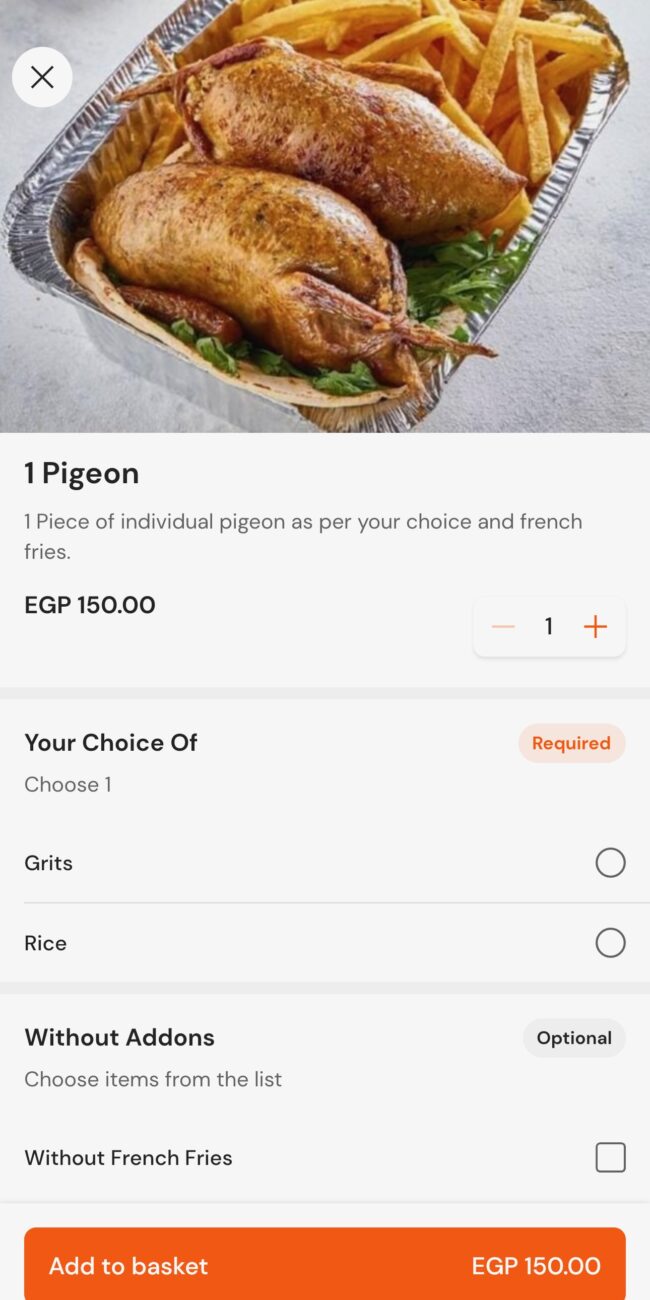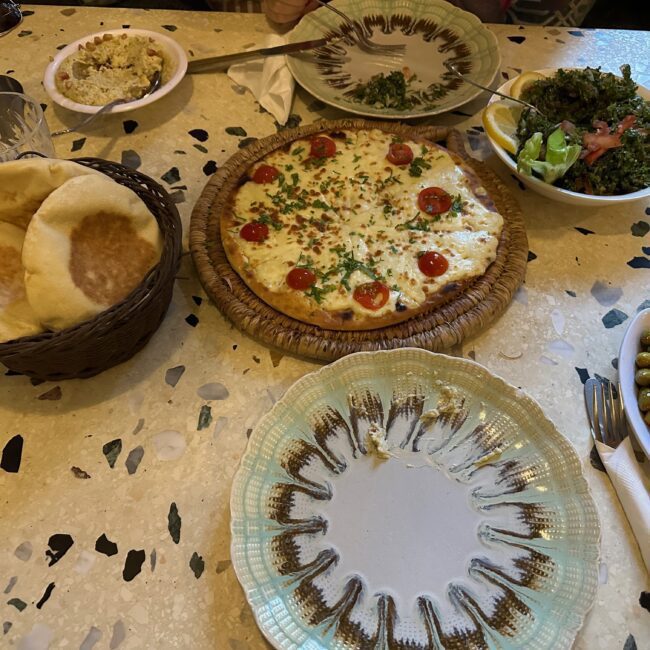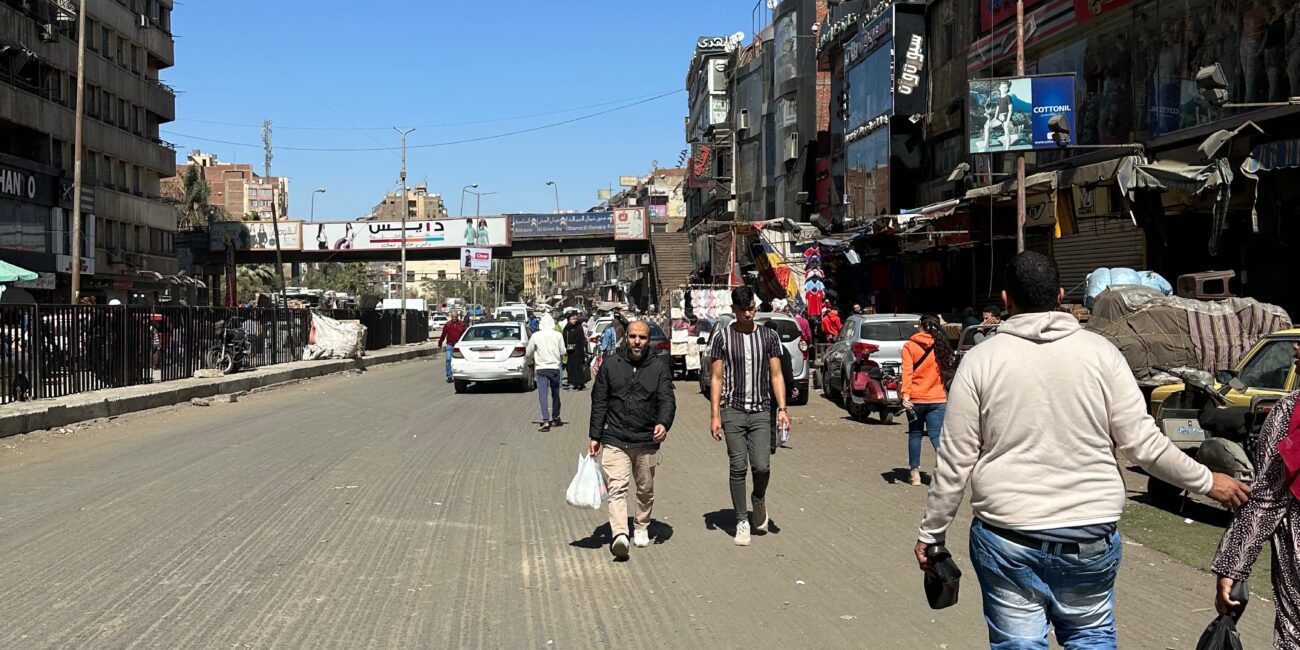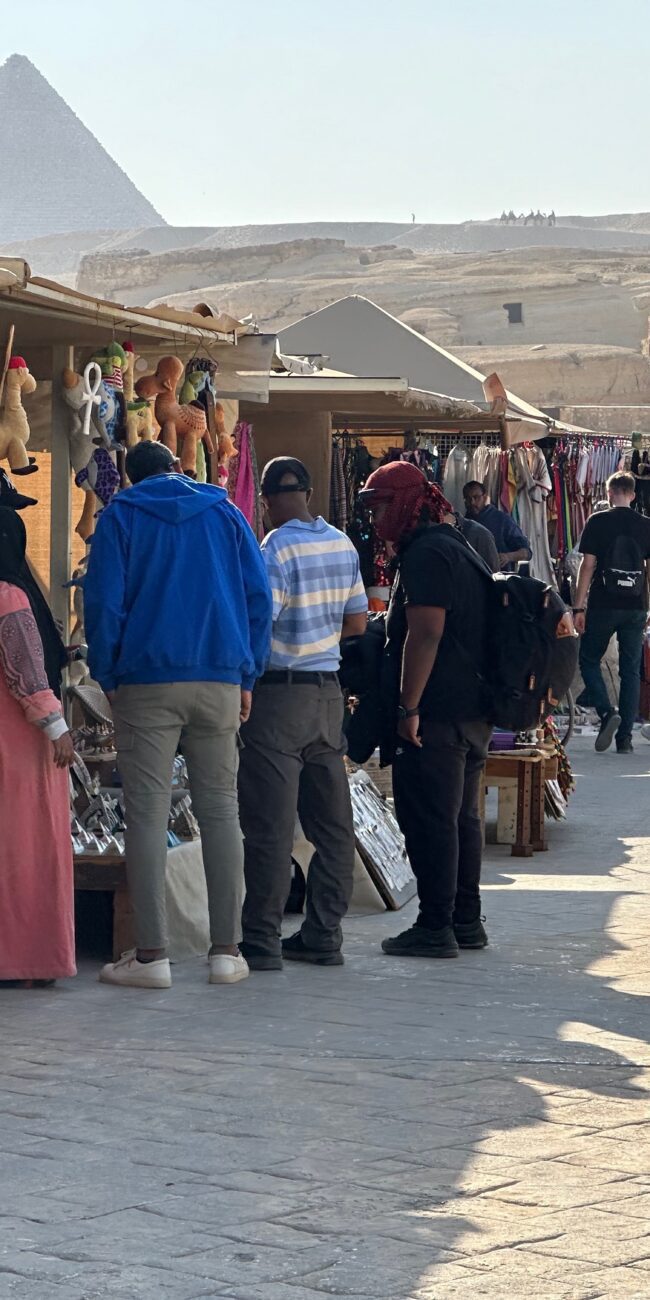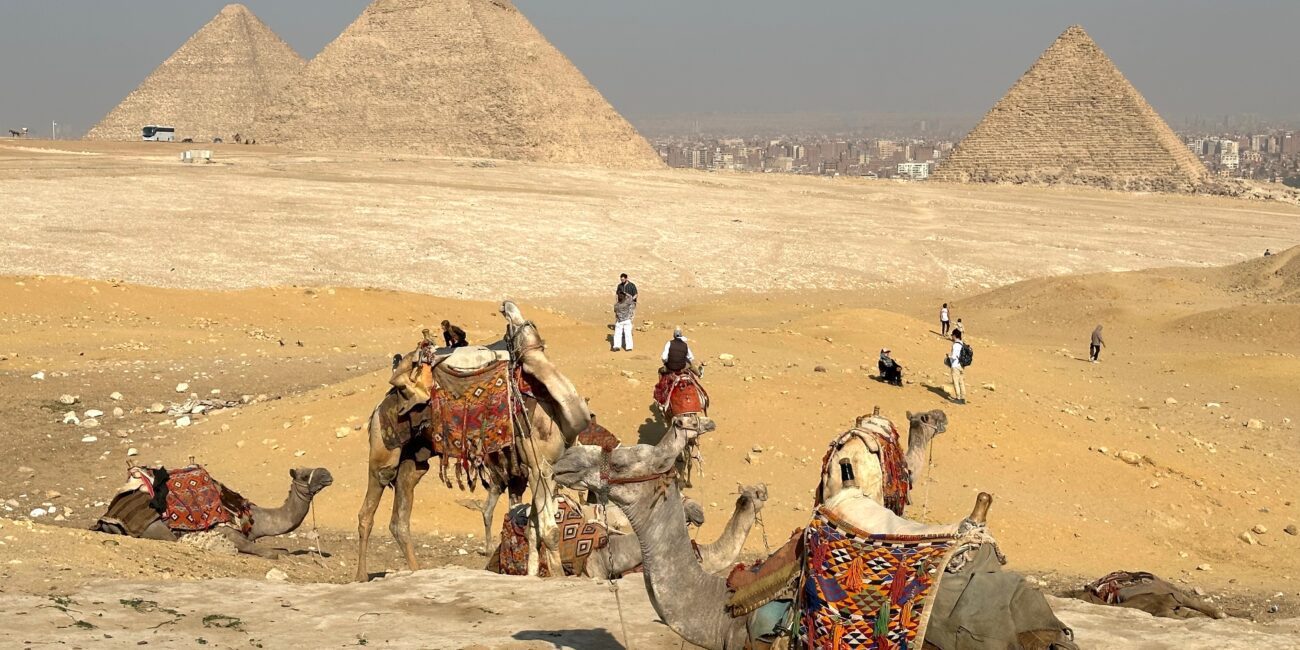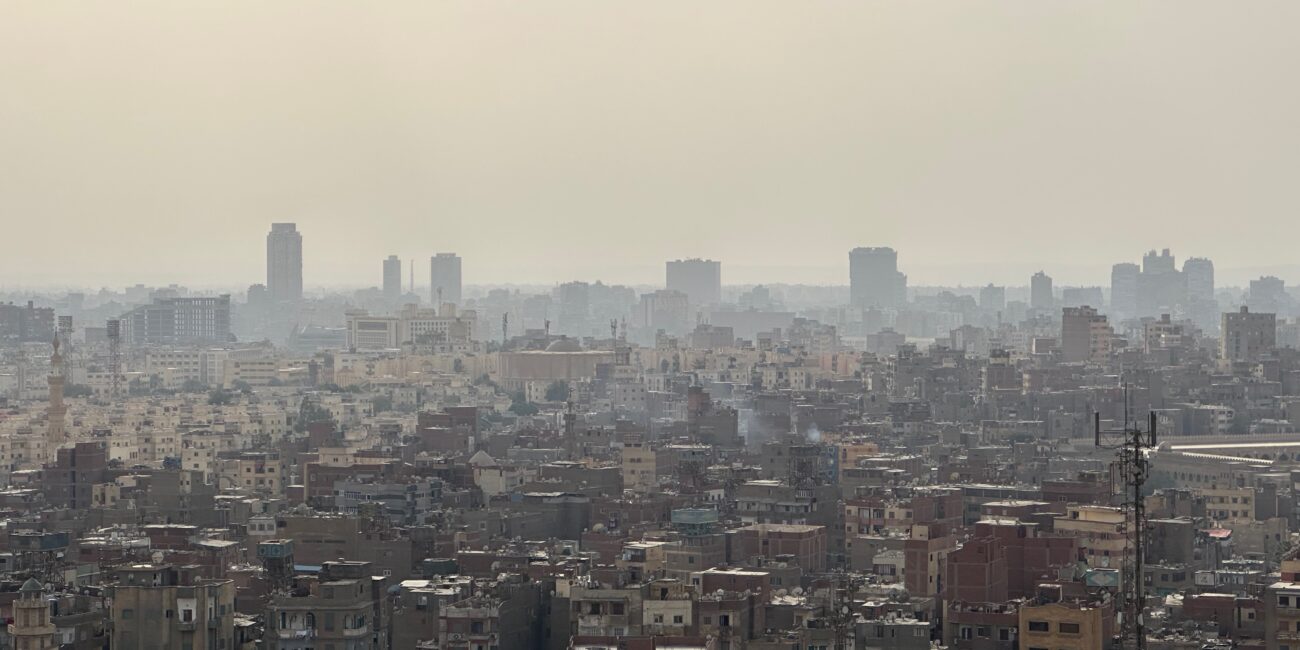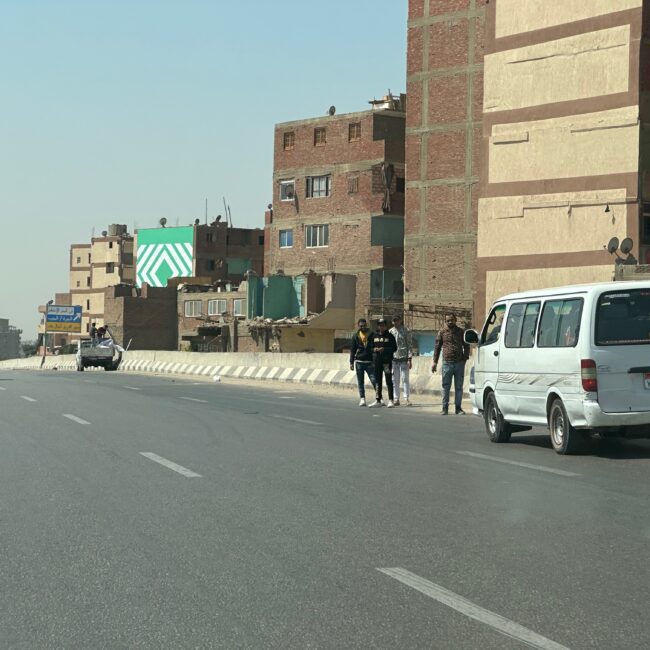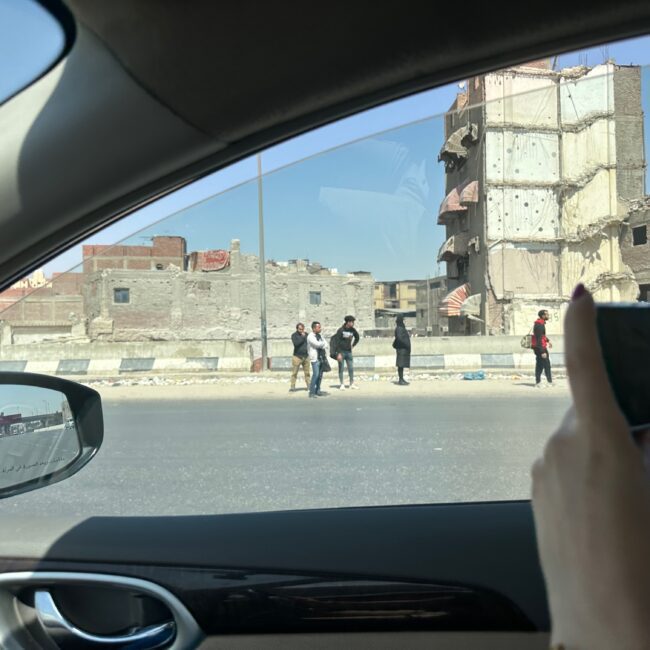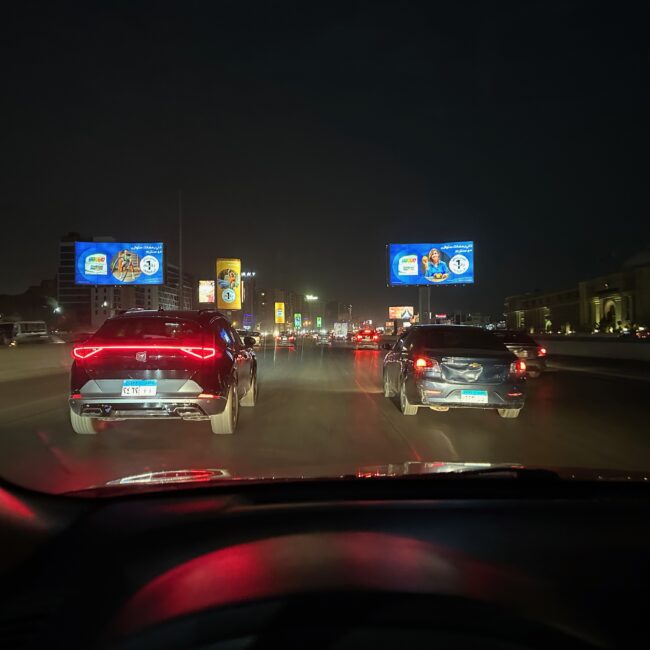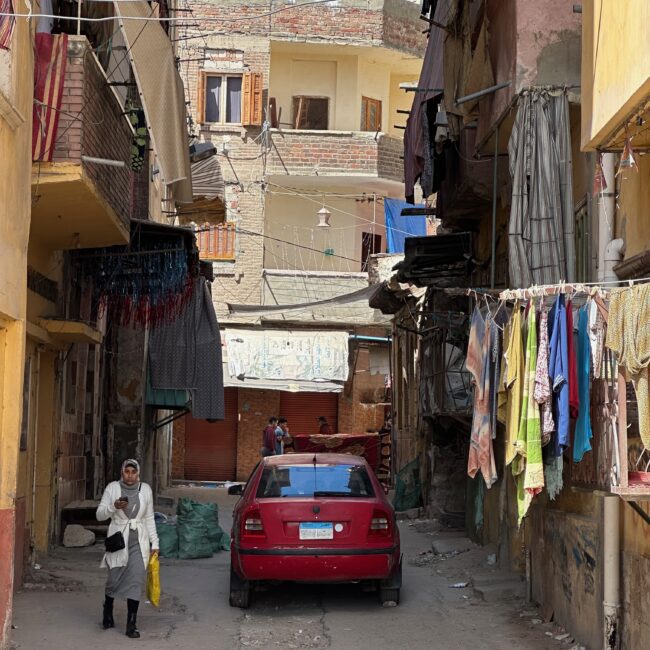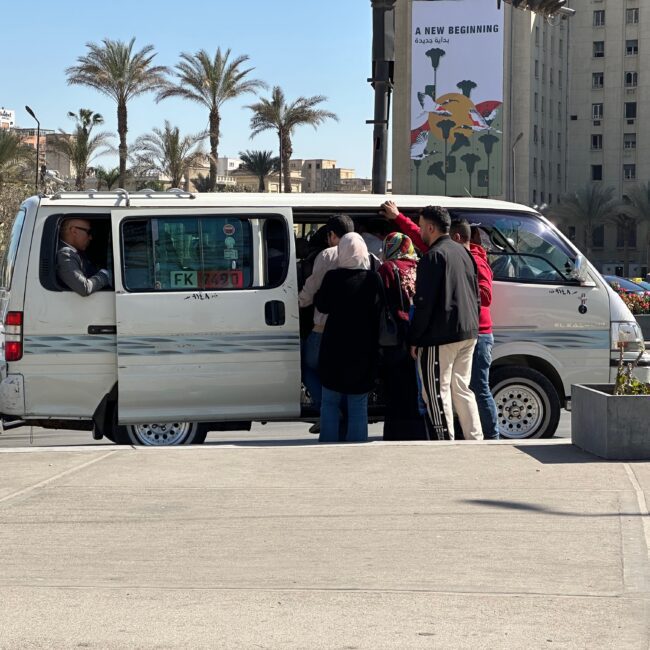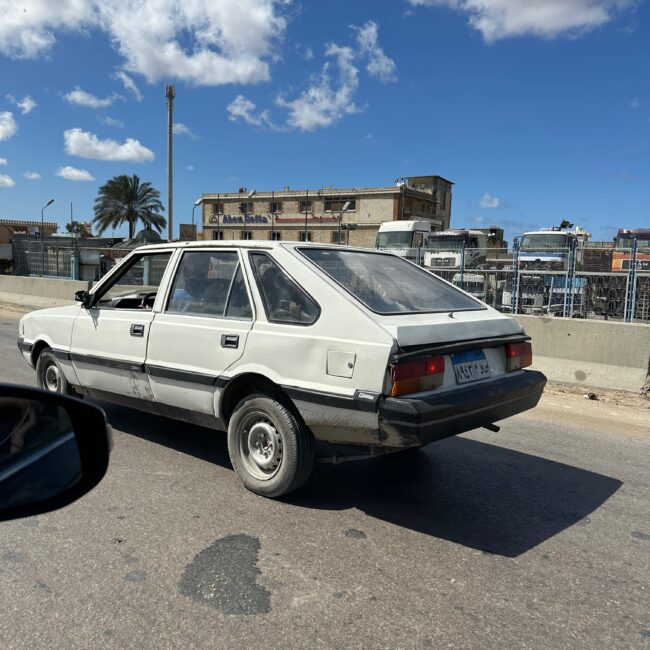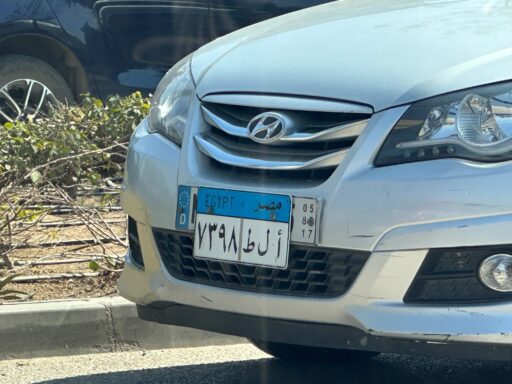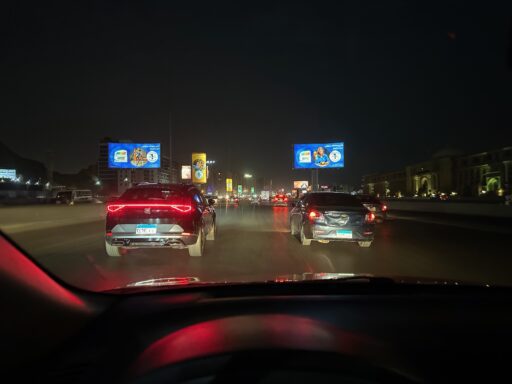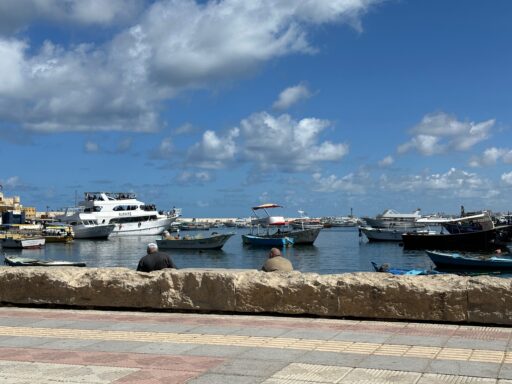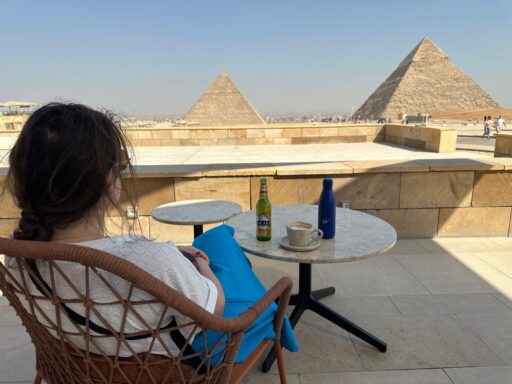This post is also available in:
Polski
Hello! 👋
When people think of Egypt, they often picture luxury resorts in Hurghada or Marsa Alam, with days spent lounging by the pool or snorkeling around coral reefs. But the real Egypt is more than all-inclusive and fake smiles of hotel employees. We decided to discover the country on our own – we rented a car and set off on a journey through bustling Cairo and historic Alexandria, avoiding the usual tourist routes.
This article is an account of our trip, during which we got to know the authentic face of Egypt – with its hustle, chaos, friendliness, but also dangers. Did every local really want to deceive us? What challenges did we encounter along the way? And what is worth knowing when deciding to travel the land of the pharaohs on your own? Read on for our adventure full of discoveries and surprises!
How did we get to Egypt?
Our trip began with a direct flight to Cairo thanks to LOT Polish Airlines. The cost of the ticket was not too exorbitant – about PLN 790 per person round trip, which is a pretty decent price for a direct connection. Unfortunately, it was not without adventures at the very beginning – our flight was delayed almost three hours. I say “almost” because the three hours entitling us to compensation was only 10 minutes short. You could say that bad luck wanted us to miss out on the compensation we were entitled to.
Fortunately, we quickly solved the situation by using the business lounge, thanks to SmartDelay from Revolut. As soon as we got the delay notification, we headed to the Non-Schengen area at Okęcie. While the lounge itself didn’t knock our socks off, it was a nice alternative to waiting at the airport. After the delay, we finally arrived in Cairo with our visa already prepared, which allowed us to avoid unnecessary paperwork on the spot.
The flight delay disrupted our entire itinerary, postponing the car rental pick-up and our check-in at the lodging facility. But well, you have to be prepared that sometimes such a situation can happen. Most importantly, we were already in Egypt, ready for our independent discovery of this amazing country! Although with this being ready, I would not overdo it….
Visas and documents
We started the process of applying for a visa to Egypt before we flew out, using the official Egypt eVisa website. The site is intuitive and easy to fill out. After submitting the application and paying the fee, we waited a few days for the electronic visa to be issued. This is definitely more convenient than doing the paperwork at the airport.
Of course, it is possible to get a visa on the ground, but a few problems are worth mentioning. First, paying by card at the airport is sometimes problematic – cash is preferred (or even required), and in US dollars. It sounds like a throwback to the 1990s, when a payment card was rare. In addition, it is possible to come across middlemen who will “help” arrange a visa, for an additional fee, of course. Frankly, I don’t see the point of paying someone for something you can do yourself in a few minutes. The cheating starts already at the airport!
Don’t pay extra fees
It’s also a good idea to avoid intermediary companies for obtaining eVisa that advertise on the Internet. There is no need to give your data to third parties, since the whole process is simple and secure. You can easily pay the visa fee by credit card directly on the official website. Don’t overpay – arranging the visa yourself is quick and trouble-free.
When it comes to the documents needed to rent a car, do not forget the international driver’s license. It is required for renting and using a vehicle in Egypt, so it’s a good idea to get one before you leave.
Car rental
First steps
With independence in mind and a desire to discover the real Egypt, we decided to rent a car. Everything was booked in advance, but on the spot it turned out that our rental company took a very “Egyptian” approach. Despite the fact that we gave the flight number in the reservation, no one monitored our arrival. The problem is that it’s hard to let them know you’re landing while you’re in the air (while still being on a delayed flight). In countries like Egypt, WhatsApp is becoming an indispensable tool – all contacts, negotiations and business matters are handled there.
Egyptian approach to the matter
Upon landing, we found out that our rental company didn’t have a stand at the airport. Stepping outside, the “comfort” level dropped even further as we were bombarded with “once-in-a-lifetime” offers for transportation. Around 40 eager people gathered outside the terminal, ready to “snatch” us – fortunately, separated by several armed officers.
We had a SIM card with Internet access but couldn’t make calls. Contacting the rental company with a Polish SIM card was challenging. The Polish number for Economy Car Rentals was inactive, and the local contact kept changing his story – first saying he was at the airport, then that he was on the way. Meanwhile, roaming charges were piling up. After an hour of waiting and declining numerous “Uber offers without the app,” we found out our reservation was lost.
Trustworthy phone
Resigned, we ordered an Uber to New Cairo, where we had booked accommodation. Fortunately, the transportation was very cheap – Uber in Egypt is a great option, especially if you pay with local currency. Unfortunately, just before we got there, my iPhone suddenly stopped responding – nothing worked, neither shutdown nor reset. All navigation and contact were locked, which obviously didn’t make the situation any easier. But more about that in the section on accommodation….
The next day we went to the rental office. After some criticism, we managed to rent a car, albeit a basic version. Frankly speaking, for Egyptian roads nothing more is needed – the risk of other drivers scratching the car or damaging the vehicle on terrible roads is high.
Road conditions
As for the ride by itself? Egypt is a real cosmos. If you think driving in Turkey or Saudi Arabia is a challenge, the traffic rules here are just a suggestion. Lines on the road? Who cares about them – the width of the roadway is just an indication of how many cars can fit next to each other. Turn signals? An unnecessary addition, and the bulbs can only burn out unnecessarily. Road quality is severely below standard, so even if one is going to rent something better than a standard compact, I recommend thinking twice.
Public transport
Bus communication
Although buses in Egypt are available, we did not use them. It was difficult to find up-to-date schedules, and the condition of the vehicles did not encourage travel. For more comfort, we chose to rent a car and Uber, which gave us freedom and independence in planning our route.
Subway
Cairo’s metro system, the first in Africa, is an interesting mix of modernity and the past. While some of the stations resemble those of the Warsaw subway system of the 1990s, others can bear traces of their former glory. On one of the available lines there are cars that remember the days of several decades ago. Inside them you won’t find air conditioning, only old fans, and the windows are protected by bars. Such a “retro style” is surprising, especially for those accustomed to modern train sets.
The Cairo Metro is extremely affordable, with ticket prices based on the number of stations traveled. For tourists, even the longest routes cost next to nothing compared to European prices. A unique feature is the separate women-only sections in the carriages, available for most of the day, providing a safer and more comfortable experience on crowded trains.
Unusual situations also include the proximity of the metro to the daily life of the city. The entrance to some stations can be next to places where sheep graze or vendors trade vegetables – such sights are normal in Cairo.
It’s also worth mentioning that the Cairo metro can be very overcrowded at times, especially during rush hour. Nevertheless, it is one of the most efficient ways to get around the city, given the gigantic traffic jams on the streets. There are plans to expand the system with new lines to offload existing routes and connect more of the city’s neighborhoods.
Accommodation
Our adventure with accommodation in Cairo began atypically. Immediately upon arrival, my phone suddenly stopped responding – I couldn’t pay for my lodging because the device was living a life of its own. For an hour it sent emergency notifications with my location to the nearest three contacts, which caused considerable confusion. Only after consulting Apple support did I manage to reset it with a special command. You can imagine what kind of SMS roaming bill I had to pay afterwards!
Cairo – Livingville Nine, New Cairo
During our stay in Cairo, we chose to stay in New Cairo, a modern, expanding neighborhood located east of the city center. It’s an ideal location for those looking for peace and quiet and wanting to avoid the hustle and bustle of Old Cairo. Our choice was Livingville Nine – a spacious apartment with all amenities, including a parking space at no extra charge (we parked on the street next to the house). The neighborhood was quiet and peaceful, a pleasant contrast to the chaotic city center.
Unfortunately, half of our stay was without residential Internet access, which was problematic, especially since the network was already underperforming. Working remotely in Egypt would have been a real challenge – VPN connections to European servers were unstable and very slow, if successful at all. This is a big disadvantage if one plans to work remotely during the stay. Apart from this minor inconvenience, staying in New Cairo proved to be a comfortable option, away from the crowds and noise.
Alexandria – Sunrise Alex Avenue Hotel
We stayed at the Sunrise Alex Avenue Hotel in Alexandria, centrally located right on the Mediterranean Sea. Despite being an all-inclusive property, it was mostly empty during our visit. We noticed a stark price difference—tourists often pay 3-4 times more than locals. Parking was charged separately, with rates similar to those in European cities, and no room for negotiation.
Breakfast was a bit inconvenient, as we had to order specific dishes instead of enjoying a buffet. We only discovered the menu on our last day when staff asked for our feedback. Internet was included in the room rate, which is a plus, as many all-inclusive hotels limit Wi-Fi access to the lobby.
Despite being in the city center, our room was quiet. Ordering food through the Talabat app was easy, simplifying meal arrangements in both Alexandria and previously in Cairo.
SIM card
Buying a local SIM card in Egypt turned out to be a better choice than using services like Airalo. At the airport, the price for a card with a 10 GB limit was about 25-30 PLN (6-7 USD) per person, which is really favorable compared to roaming or eSIM offers. It would probably be possible to find even cheaper deals in the city, but we didn’t want to waste time searching.
It’s worth mentioning that the available cards are the 4G standard – 5G is unlikely. Nevertheless, the connection was stable and sufficient for daily needs.
Payment claim
The first chance to use the chargeback option came with a Curve card payment for our SIM cards. A mysterious fee appeared on the transaction, which wasn’t listed in the price breakdown (and if it was for weekend payments, it shouldn’t have applied that day). I had my private card linked to Curve, so I filed a complaint with both mBank and Curve. Unfortunately, as a basic Curve user, I experienced delays in support. After several days, I finally got a response—but it addressed a completely different transaction. I forwarded the correspondence to mBank, and they quickly resolved the issue and refunded the amount.
Food
Our visit to Egypt coincided with Ramadan, so most restaurants and cafes were closed during the day, especially in New Cairo. Luckily, Starbucks was open, and became our go-to spot for breakfast. Prices were surprisingly low—my oat milk coffee was just 7-8 PLN, and breakfast cost 20-25 PLN.
It’s worth noting the “Big Mac Index,” which compares Big Mac prices worldwide to measure purchasing power. Egypt ranks first, meaning your money goes further here. If there were a “Starbucks Coffee Index,” Egypt would surely be at the top.
Good food and low price
Although inflation and financial problems are evident in Egypt, the cost of food was very favorable for us. In the city, we didn’t spend more than PLN 30 for lunch for two people, and in a restaurant in New Cairo City we paid about PLN 60, being really full. Eating in local bars and restaurants did not cause us any health problems, although we decided to avoid typical street food – “Pharaoh’s revenge” was still stuck in our heads.
We had no issues with food in Alexandria. Breakfast was at the hotel, and other meals we ordered via the Talabat app. Thanks to app promotions, the food was very affordable. A liter of fresh juice cost 3-4 PLN, and shawarma around 12 PLN – great value. The only issue was that payment cards didn’t always work, so we used cash from ATMs.
Egypt turned out to be a paradise in terms of food prices, which was definitely conducive to our daily meals. We will definitely return to Cairo again, although we will still be careful with the food from the street stalls!
The Pharaoh’s Revenge
The famous “Pharaoh’s revenge” is the nightmare of many tourists visiting Egypt. This popular term refers to sudden stomach problems that can get even those who conscientiously follow hygiene rules. In our case, it was Jadzia who experienced unpleasant symptoms for three days, despite the fact that we took probiotics for a week before the trip and tried to avoid potentially risky foods. In my case – despite the fact that in this relationship I am the one with food intolerances – there was peace.
There’s no rule for who will fall victim to “Pharaoh’s revenge.” Even if you follow all precautions, you can still get stomach issues. That’s why it’s good to have medication like Nifuroxazide, which helped Jadzia. If you don’t have it, you can find Antinal in local pharmacies. Make sure you have insurance to cover any medical costs if things get worse.
Although our medical experience may be different from what other travelers will encounter, such preparation helped us get through the adventure without too much trouble.
Pay attention
Avoid raw fruits and vegetables that might be washed in unboiled water. Be cautious about the quality of food, especially in less-known places, and if unsure, skip street food. There’s no foolproof way to prevent “Pharaoh’s revenge” – if it happens, it happens. The best you can do is be prepared for any situation.
Exchange office or ATM?
We prefer withdrawing cash from ATMs using international currency cards, avoiding the hassle of finding exchange offices or negotiating rates – it’s both convenient and cost-effective. Keep in mind that some ATMs in Egypt may charge fees; if so, simply try another machine, as some banks don’t impose additional costs. Unlike in Poland, where networks like Planet Cash often waive fees, each Egyptian bank has its own rules.
Using ATMs also helps you steer clear of unfavorable rates or scams from money changers. Withdrawing local currency directly offers flexibility, especially in countries where expenses can vary and price differences between tourists and locals are significant.
If you plan to use ATMs, check which banks offer fee-free withdrawals. Always opt for withdrawals in the local currency to avoid unfavorable exchange rates that ATMs may suggest by default.
Does everyone want to scam you?
Watching videos on TikTok, one might get the impression that in Egypt every tourist is doomed to be scammed and swindled. Is this really the case? Our experience has been mixed. In most of the country we encountered normal, helpful people. We encountered real scams only in one place – at the Giza pyramids.
At Cairo airport, we immediately came across people offering “Uber” transportation without an app. Such offers may seem tempting, but they are worth avoiding, as a ride can cost much more than one ordered through an app, and the risk of being scammed increases. It is always better to use official apps or order a cab from a hotel.
When paying by card, always choose to pay in local currency (EGP) to avoid unfavorable currency conversions. Egypt is not a country where you have to carry dollars or euros – payments in local currency come out much more favorable.
Lack of trust
At the pyramids, we have had to deal with several attempts to scam. People claiming to be “employees” even show some identification and offer assistance, supposedly included in the ticket price. They tell us that it is forbidden to go to the pyramids on foot, that you have to rent a camel, and when you refuse, suddenly their “service” becomes payable. When we gave them token change in local currency in return, they showed their displeasure, expecting dollars. Another person warned us about “ scammers” and tried to tell us herself that she should be charged for “not helping”. Already knowing how this mechanism works, we decided to avoid any offers of help from afar.
Be careful at markets don’t handle items unless you’re ready to buy, as vendors might claim damage or insist you’ve “used” them, demanding payment. It’s wise to carry local currency and keep cards or dollars out of sight to avoid attracting unwanted attention.
In conclusion, although scams are a real threat, not every Egyptian wants to scam you. Just be watchful, stick to the tried-and-true and don’t be fooled. With some basic safety precautions, traveling in Egypt can be truly enjoyable and hassle-free.
Climate and weather conditions
Egypt has a dry desert climate, with little rainfall throughout the year. Our trip took place in March, which turned out to be a great choice in terms of weather. Daytime temperatures ranged from 20°C to 28°C, which was perfect for sightseeing. Nights were a bit cooler, so it’s a good idea to bring something warmer with you.
The best time to visit Egypt is from October to April, when temperatures are pleasant, ideal for sightseeing and outdoor activities. In the summer, especially from May to September, temperatures can reach up to 40°C, which can be a challenge for tourists, especially in the intense sun and with limited shade available.
When planning a trip to Egypt, it is also worth remembering that temperatures can vary considerably from region to region. On the Red Sea and the Sinai Peninsula, the climate is more mild, which is conducive to relaxing on the beaches, while inland, in desert areas, the temperature differences between day and night are more pronounced.
Safety
On the subject of security in Egypt you can find a lot of opinions, especially on forums of all-inclusive people. Often there is information about problems with moving around the country, controls on routes and the need to give bribes. In our experience, this is a myth – during the entire trip we did not encounter any such situations. The only controls we encountered were those at toll highway gates, such as on the route from Alexandria to Cairo, where you simply pay the toll.
In terms of personal security, we felt at ease – no one tried to rob us or threaten us in any way. Of course, there were situations of money pulling, especially with pyramids, but we did not have the feeling that someone wanted to harm us. It’s more a matter of annoying scams than real danger.
Traffic
Another issue, however, is road safety. Crossing the street in Cairo can be a real challenge – especially where there are no lanes. Then the only strategy is to sprint across several lanes of traffic, dodging speeding cars like Usain Bolt on the track. It’s better to cross “lanes,” that is, jumping from one gap between cars to another. This is a real test of nerves, especially if you are not used to such chaos.
Driving in Egypt is a unique challenge. Drivers often ignore traffic rules, switch lanes without signaling, and sudden stops by minibuses to pick up passengers are common. You need to stay alert, as potholes can appear out of nowhere, and road quality varies greatly. Paid expressways are generally well-maintained, but free roads can be full of potholes and unexpected obstacles.
However, after a few hours behind the wheel, you start adapting to this driving style, especially if you’re familiar with navigating in “wilder” conditions. For those new to such environments, it can be quite daunting.
Places we visited
During our trip, we explored many fascinating places in Cairo and Alexandria—from the bustling streets of New Cairo 🏙️, to the pyramids of Giza 🏜️, and charming Alexandria 🌊. Check out our separate article for detailed insights and adventures!
👉 Take a look here, to find out what we saw in Cairo!
👉 Take a look here, to see what we visited in Alexandria!
Summary
Our trip to Egypt was full of contrasts and unforgettable impressions. On the one hand, fascinating monuments, rich culture and hospitality of the locals, on the other – a somewhat chaotic reality. Nevertheless, traveling on our own allowed us to see the true face of this country, away from the beaten path set by travel agencies.
Cairo and Alexandria are cities full of life, history and diversity. Exploring them on our own, although requiring some flexibility and vigilance, proved to be extremely interesting. Despite a few difficulties, such as unpredictable traffic, we managed to visit what we had planned safely and without major complications.
Egypt is a country that can surprise and delight, but also requires a certain amount of preparation and understanding of local realities. If you are planning a similar trip, use good common sense, but don’t be afraid to go beyond the tourist schemes – then you will discover the true magic of this place.
Poverty and destruction
In Egypt, you can see massive poverty – we encountered people begging on the streets, and many buildings are in deplorable condition. This contrast is not so apparent in New Cairo, where new developments and better infrastructure prevail. In other parts of the country, dilapidated buildings and poor quality roads are the order of the day. It’s a sad reality that serves as a reminder of the high social inequality and difficult living conditions of many residents.

